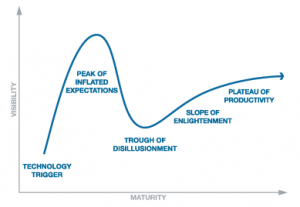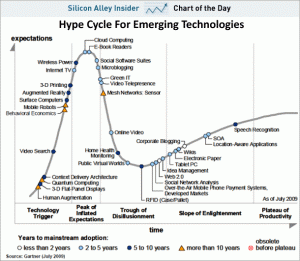The French have pulled the plug on Minitel, the videotex service that was introduced in 1982, 30 years ago. I remember seeing my first Minitel terminal in France where I lived briefly in 1982-83. I wish I could say I understood it at the time for what it was, but what struck me then was that it was a awkward replacement for the phonebook. Anyway, as of June 30th, Minitel is no more and France says farewell to the Minitel.
Minitel is important because it was the first large-scale information service. It turned out to not be a scalable and flexible as the web, but for a while it provided the French with all sorts of text services from directories to chat. It is famous for the messageries roses (pink messages) or adult chat services that emerged (and helped fund the system.)
In Canada Bell introduced in the late 1980s a version of Minitel called Alex (after Alexander Graham Bell) first in Quebec and then in Ontario. The service was too expensive and never took off. Thanks to a letter in today’s Globe I discovered that there were some interesting research and development into videotex services in Canada at the Canadian Research Communications Centre in the late 1970s and 1980s. Telidon was a “second generation” system that had true graphics, unlike Minitel.
Despite all sorts of interest and numerous experiments, videotex was never really successful outside of France/Minitel. It needs a lot of content for people to be willing to pay the price and the broadcast model of most trials meant that you didn’t have the community generation of content needed. Services like CompuServe that ran on PCs (instead of dedicated terminals) were successful where videotex was not, and ultimately the web wiped out even the services like Compuserve.
What is interesting, however, is how much interest and investment there was around the world in such services. The telecommunications industry clearly saw large-scale interactive information services as the future, but they were wedded to centralized models for how to try and evolve such a service. Only the French got the centralized model right by making it cheap, relatively open, and easy. That it lasted 30 years is an indication of how right Minitel was, even if the internet has replaced it.


